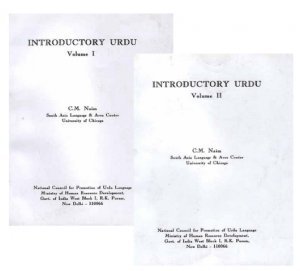Издательство: Third Kdition South Asia Language & Area Cculcr
L'nivcrsiiy of Chicago
Год: 1999
There must be now at least sixty million people in South Asia who regard Urdu as their mother tongue. There must be twice as many, perhaps more, who understand Urdu and would even use it on occasion, in conversation if not in writing. While the literary history of Urdu goes back to the fifteenth century*, specimens of it begin to be found as early as the thirteenth. Presently. Urdu is the official language of Pakistan and one of the sixteen major languages constitutionally recognized in India. It is the state language in Indian Kashmir. And Urdu literary activities continue in Bangladesh. Urdu speakers and publications can also be found in substantial numbers in the Middle East. England, and North America. In South Asia, people of all religions contributed to the development of Urdu literature, and they still continue to do so. The major centers of Urdu literary activity arc Lahore, Karachi, Sargodhaand Islamabad-Rawalpindi in Pakistan, while Delhi, Aligarh. Lucknow. Patna, Hyderabad and Bombay continue to play thai role in India.
How does Urdu differ from Hindi? It is not an easy question to answer, for while at one level of linguistic discourse the two speech-forms show hardly any difference, at another level they become mutually quite unintelligible. The fact is that in the entire Hindi-Urdu region, or for all speakers of Hindi and Urdu, there arc any number of speech varieties, and every speaker knows more than one. That makes it possible for an Urdu speaker to communicate, in what he calls Urdu, with a person who claims to be using Hindi. This state of affairs, however, exists only at the level of simple oral communications. Hindi and Urdu begin to differ considerably when put into writing, or if the subject matter becomes too abstract or scholarly. Even at the phonological level, there will be found several major differences in the more formal speech forms of the two.
Год: 1999
There must be now at least sixty million people in South Asia who regard Urdu as their mother tongue. There must be twice as many, perhaps more, who understand Urdu and would even use it on occasion, in conversation if not in writing. While the literary history of Urdu goes back to the fifteenth century*, specimens of it begin to be found as early as the thirteenth. Presently. Urdu is the official language of Pakistan and one of the sixteen major languages constitutionally recognized in India. It is the state language in Indian Kashmir. And Urdu literary activities continue in Bangladesh. Urdu speakers and publications can also be found in substantial numbers in the Middle East. England, and North America. In South Asia, people of all religions contributed to the development of Urdu literature, and they still continue to do so. The major centers of Urdu literary activity arc Lahore, Karachi, Sargodhaand Islamabad-Rawalpindi in Pakistan, while Delhi, Aligarh. Lucknow. Patna, Hyderabad and Bombay continue to play thai role in India.
How does Urdu differ from Hindi? It is not an easy question to answer, for while at one level of linguistic discourse the two speech-forms show hardly any difference, at another level they become mutually quite unintelligible. The fact is that in the entire Hindi-Urdu region, or for all speakers of Hindi and Urdu, there arc any number of speech varieties, and every speaker knows more than one. That makes it possible for an Urdu speaker to communicate, in what he calls Urdu, with a person who claims to be using Hindi. This state of affairs, however, exists only at the level of simple oral communications. Hindi and Urdu begin to differ considerably when put into writing, or if the subject matter becomes too abstract or scholarly. Even at the phonological level, there will be found several major differences in the more formal speech forms of the two.

